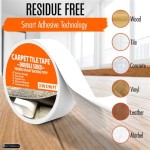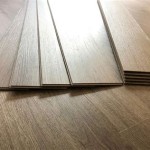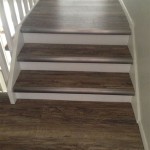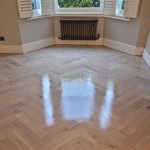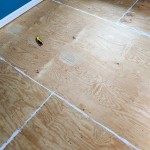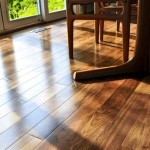What to Put Under Flooring in Basement: Essential Considerations
Transforming an unfinished basement into a comfortable and inviting living space requires careful attention to many factors, including the choice of flooring. But before laying down the flooring of your choice, it's crucial to consider what to put underneath it. The materials and techniques used under flooring can significantly impact its performance, longevity, and insulation properties.
Here are some essential aspects to consider when choosing what to put under flooring in a basement:
1. Subflooring: Subflooring is a layer installed over the basement floor to provide a stable and even base for the flooring. Common subflooring materials include plywood, oriented strand board (OSB), and vinyl underlayment. Choose a subflooring compatible with your flooring type and the conditions of your basement.
2. Underlayment: Underlayment is a thin sheet material placed between the subflooring and the flooring. It serves multiple purposes, including providing sound insulation, reducing moisture penetration, and leveling the surface for a smooth flooring installation. Choose an underlayment that suits your flooring and basement environment.
3. Vapor Barrier: Moisture control is vital in a basement, as moisture can cause mold, rot, and other problems. A vapor barrier is a moisture-resistant material, such as polyethylene sheeting, that is installed before the underlayment to prevent moisture from rising through the subflooring and damaging the flooring.
4. Insulation: Insulation is essential for maintaining a comfortable temperature in the basement and reducing energy costs. The type of insulation to use depends on the climate and basement conditions. Common basement insulation options include rigid foam insulation, fiberglass batts, and closed-cell spray foam.
5. Acoustic Insulation: If noise reduction is a concern, acoustic insulation can be added under the flooring. This type of insulation absorbs sound waves and reduces noise transfer between floors. It is particularly beneficial if there is a finished living space above the basement.
6. Professional Installation: While it may seem like a simple task, installing flooring and the materials underneath it requires precision and expertise. Hiring a qualified flooring contractor ensures that the job is done correctly, maximizing the life and performance of your basement flooring.
By carefully considering these essential aspects and choosing the right materials for your basement conditions, you can create a solid foundation for your flooring and enjoy a comfortable, well-insulated, and aesthetically pleasing living space.

Thermaldry Basement Flooring Systems Waterproof

Underlayment For Vinyl Flooring Best Options Home Pros

Underslab Retrofits Sealing Slabs Waterproof

How To Carpet A Basement Floor Diy Family Handyman

5 Best Flooring Options For Basements Floors2day

Best Budget Basement Flooring Ideas

A Guide To Subfloors Used Under Wood Flooring Floor Business

What Is A Moisture Barrier And When It Needed For Flooring Inc

Basement Subfloor Insulation Home Ca

What Is The Best Flooring To Put On A Concrete Basement Floor
See Also
